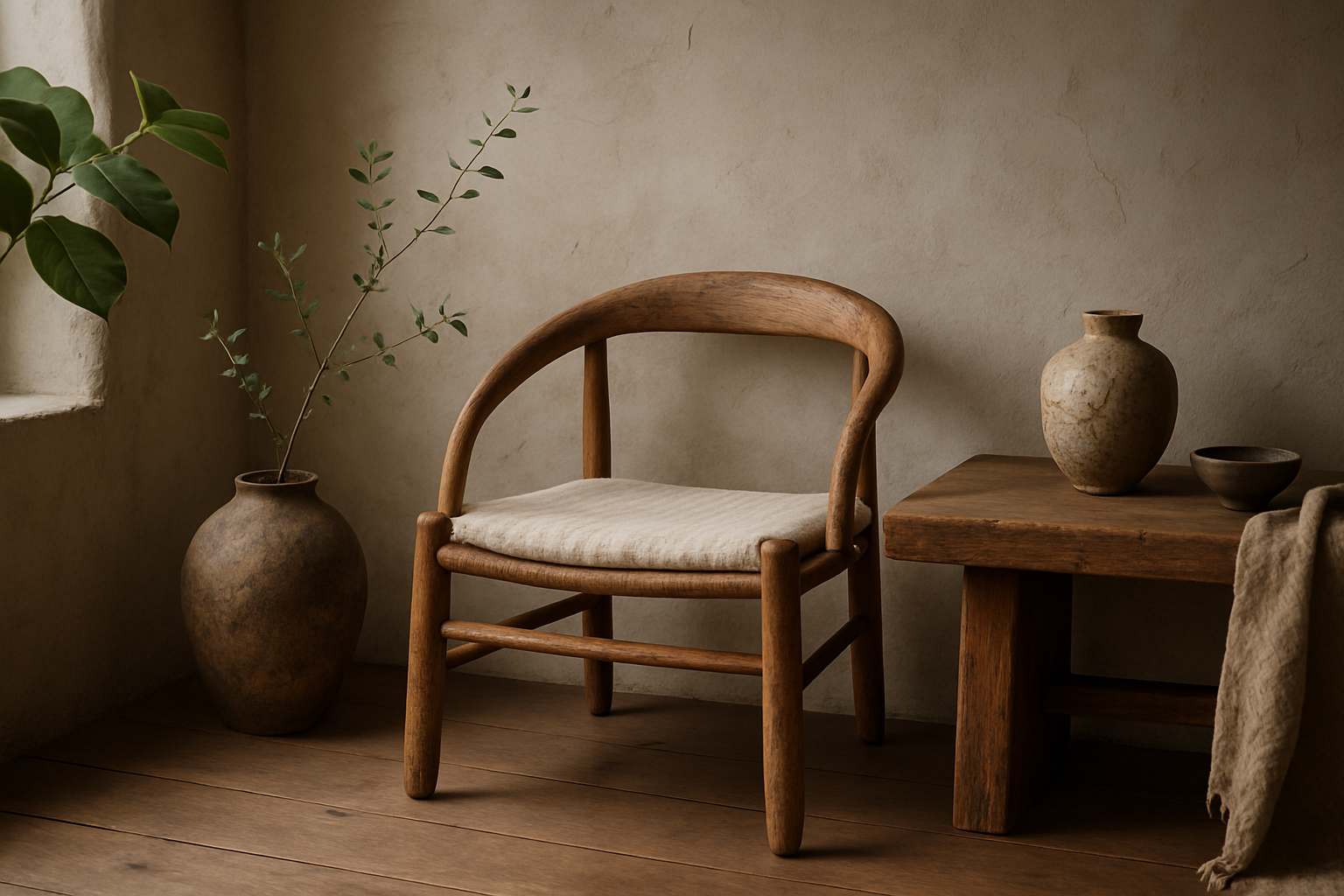Embracing Wabi-Sabi: The Art of Imperfect Beauty in Home Design
In a world obsessed with perfection, a quiet revolution is taking place in home interiors. Wabi-sabi, an ancient Japanese philosophy celebrating the beauty of imperfection, is making its way into modern homes, offering a refreshing counterpoint to sleek minimalism and polished design. This article delves into the essence of wabi-sabi, exploring how its principles can transform living spaces into havens of authenticity, mindfulness, and timeless elegance.

The Origins and Philosophy of Wabi-Sabi
Wabi-sabi finds its roots in 15th century Japanese tea ceremonies, where rustic, imperfect tea bowls were prized over ornate, flawless ones. The term itself is a fusion of two concepts: wabi, referring to rustic simplicity and a sense of being one with nature, and sabi, which embraces the beauty that comes with age and wear.
At its core, wabi-sabi is more than just an aesthetic; it’s a worldview that accepts and finds beauty in the impermanence and imperfection of all things. In design terms, this translates to an appreciation for natural materials, handcrafted items, and objects that show their age and history.
Incorporating Wabi-Sabi Elements in Modern Interiors
Embracing wabi-sabi doesn’t mean completely overhauling your space. Instead, it’s about introducing elements that bring a sense of authenticity and lived-in charm. Start by incorporating natural materials like unfinished wood, stone, and clay. These materials age gracefully, developing patinas and textures that tell a story over time.
Consider furniture and decor with visible imperfections – a table with knots in the wood, a vase with an asymmetrical shape, or a rug with subtle variations in its weave. These imperfections add character and depth to a space, creating visual interest and a sense of uniqueness.
The Role of Nature in Wabi-Sabi Design
Nature plays a crucial role in wabi-sabi aesthetics. Bringing the outdoors in through plants, natural light, and organic shapes helps create a serene, grounded atmosphere. Opt for plants with interesting textures and forms, like bonsai trees or trailing vines, which add a touch of wildness to structured interiors.
Natural light is also key. Instead of trying to control or filter it completely, allow it to play across surfaces, creating ever-changing patterns and highlights throughout the day. This interplay of light and shadow, known as komorebi in Japanese, is a beautiful manifestation of wabi-sabi principles.
Color Palettes and Textures in Wabi-Sabi Interiors
The color palette in wabi-sabi design tends towards muted, earthy tones that evoke a sense of calm and connection to nature. Think soft greys, warm browns, and subtle greens. These colors create a soothing backdrop that allows textured elements to shine.
Textures are crucial in bringing depth and interest to a wabi-sabi inspired space. Rough linens, nubby wools, and raw silks add tactile richness. Combine these with smoother surfaces like polished concrete or worn leather to create a dynamic interplay of textures that engage the senses.
The Art of Curating and Arranging in Wabi-Sabi Style
Wabi-sabi encourages a thoughtful, minimalist approach to decorating. Instead of filling spaces with numerous objects, focus on carefully selected pieces that hold meaning or beauty. This might include family heirlooms, handcrafted artworks, or found natural objects.
When arranging these items, embrace asymmetry and negative space. Allow room for each piece to breathe and be appreciated individually. This approach not only creates visually pleasing compositions but also encourages a more mindful, intentional way of living with our possessions.
Wabi-Sabi in Everyday Life: Beyond Aesthetics
While wabi-sabi offers a beautiful approach to home design, its principles extend far beyond aesthetics. Embracing wabi-sabi can lead to a more mindful, appreciative way of living. It encourages us to slow down, to find beauty in the ordinary, and to accept the natural cycle of growth, decay, and renewal.
In our homes, this might mean choosing quality over quantity, repairing rather than replacing, and finding joy in the small, often overlooked details of daily life. It’s about creating spaces that feel authentic, lived-in, and deeply connected to our experiences and values.
As we navigate an increasingly digital, fast-paced world, the principles of wabi-sabi offer a welcome respite. By embracing imperfection and impermanence in our homes, we create spaces that are not just beautiful, but deeply nurturing to our well-being. The wabi-sabi home is a sanctuary, a place where we can reconnect with the essence of what it means to be human – flaws, changes, and all.





